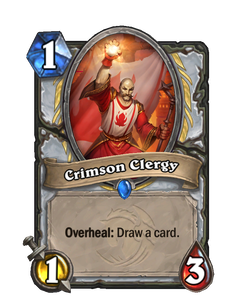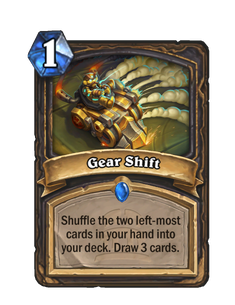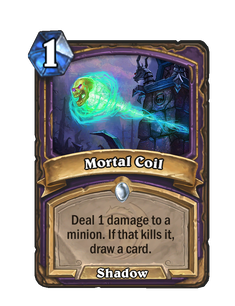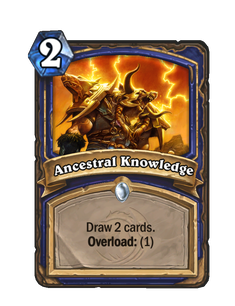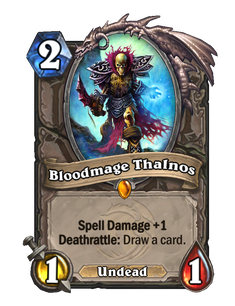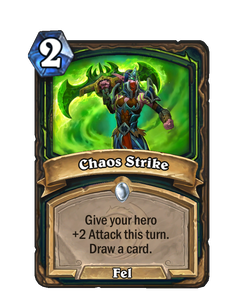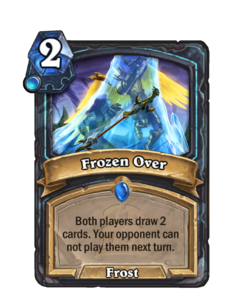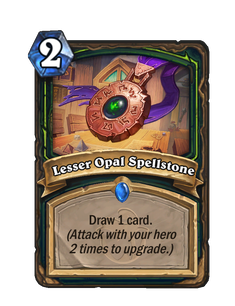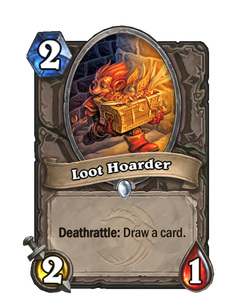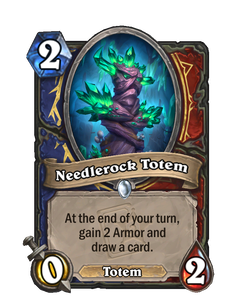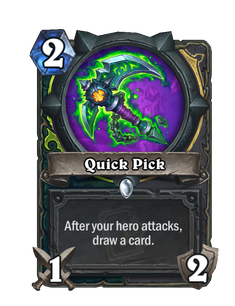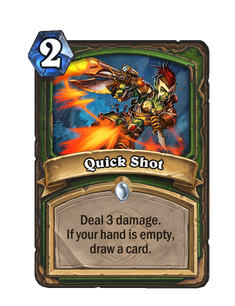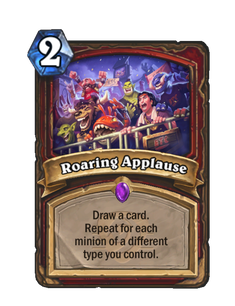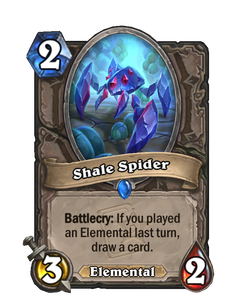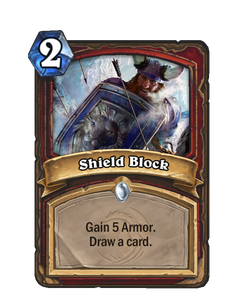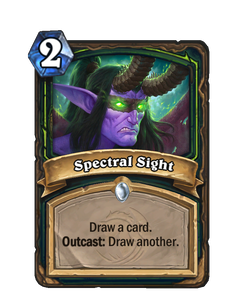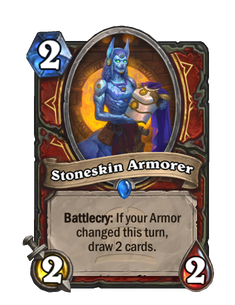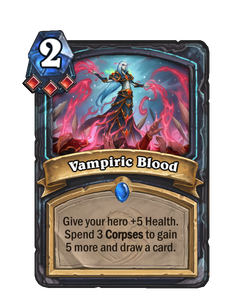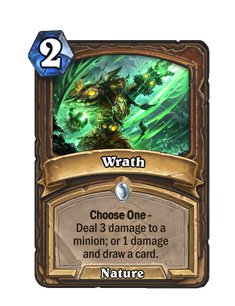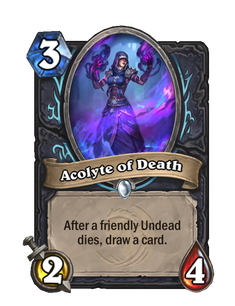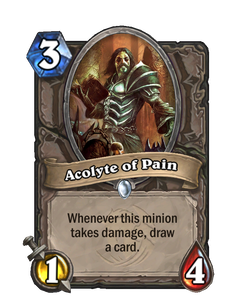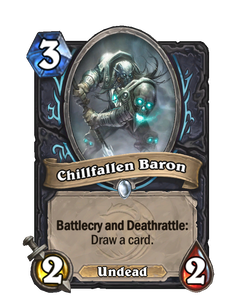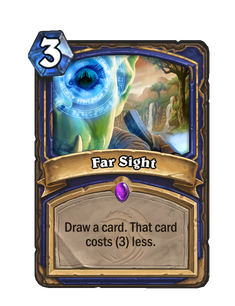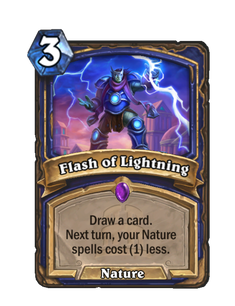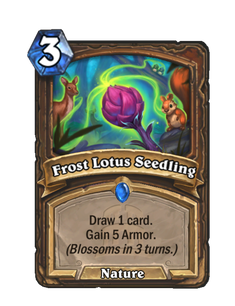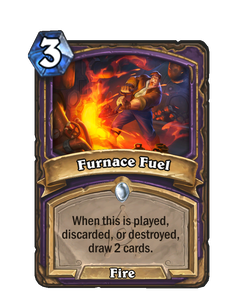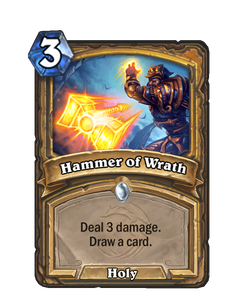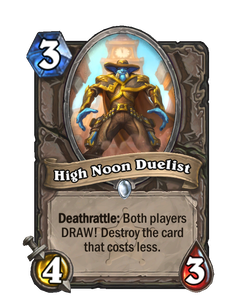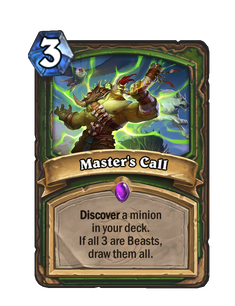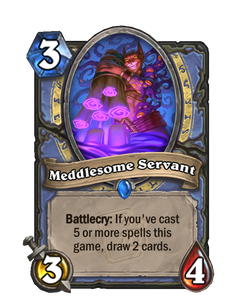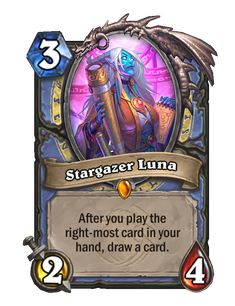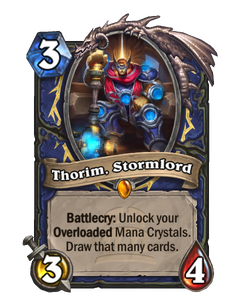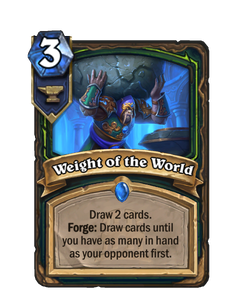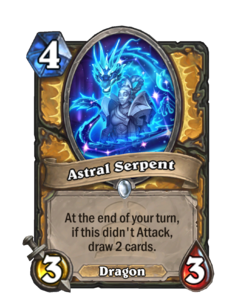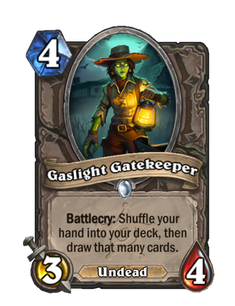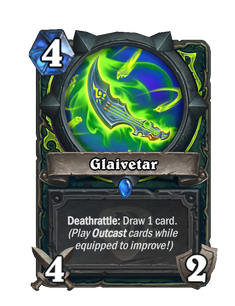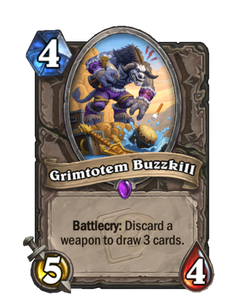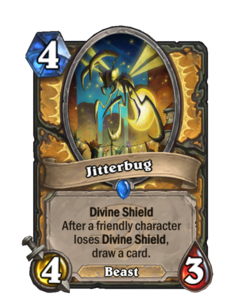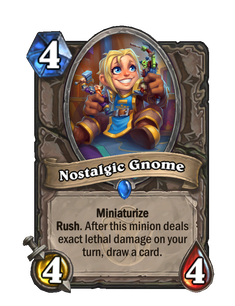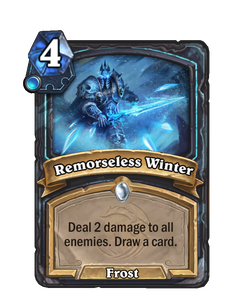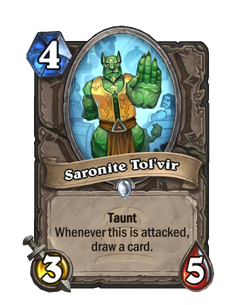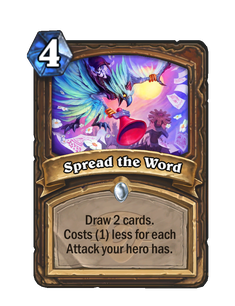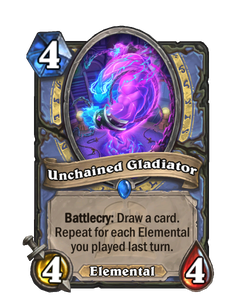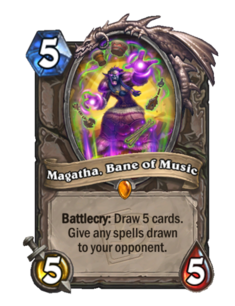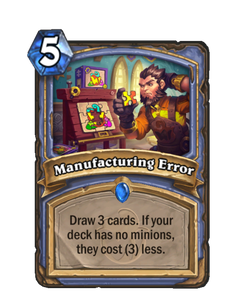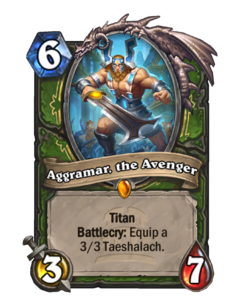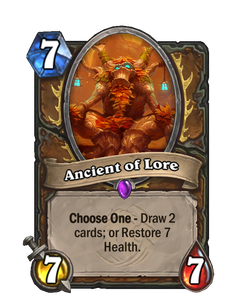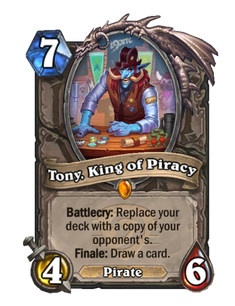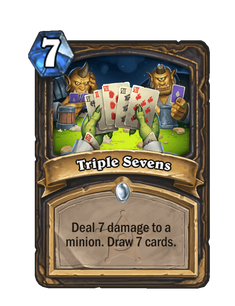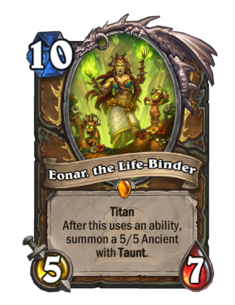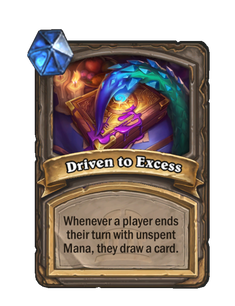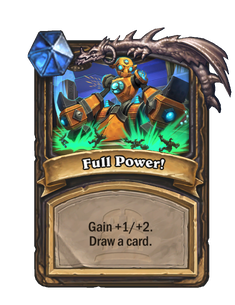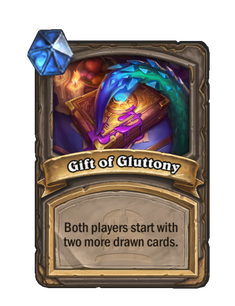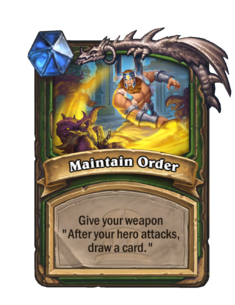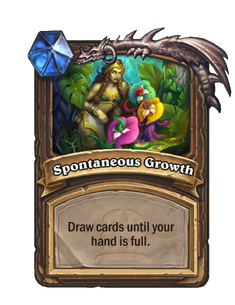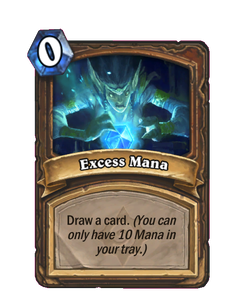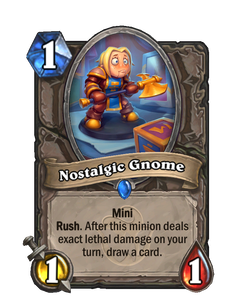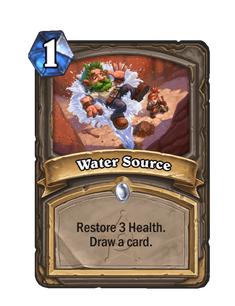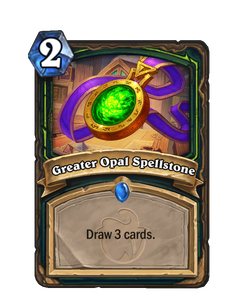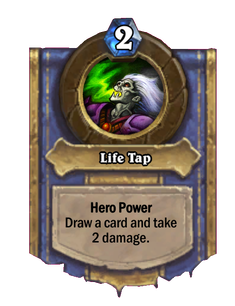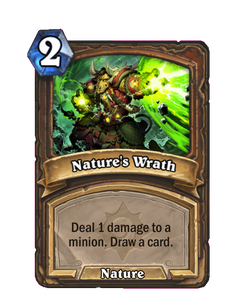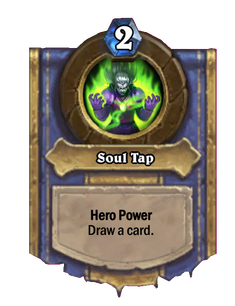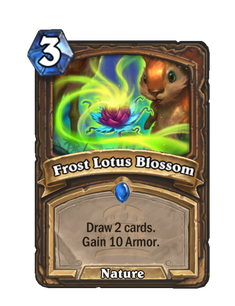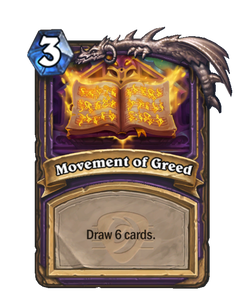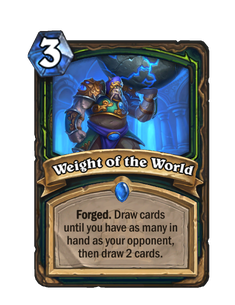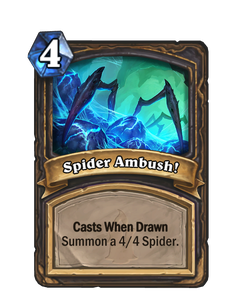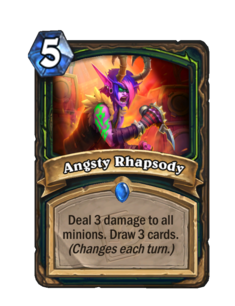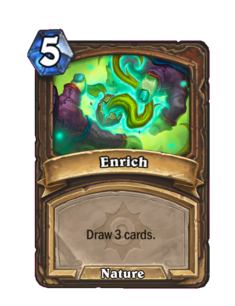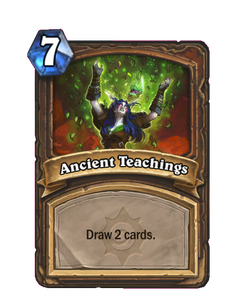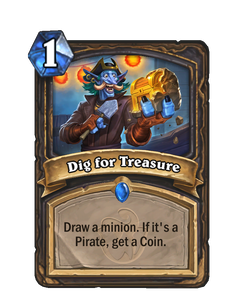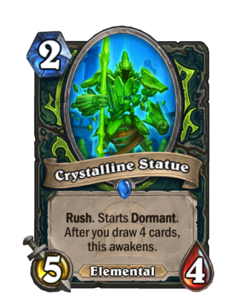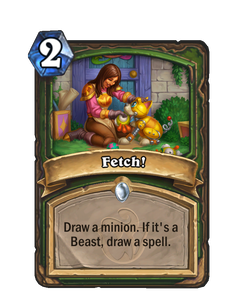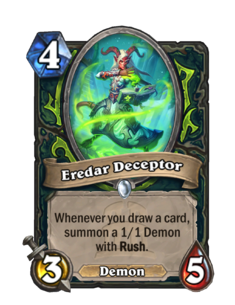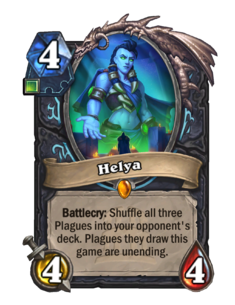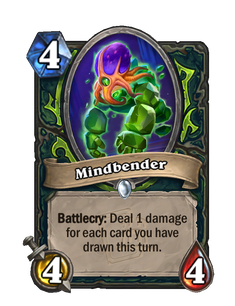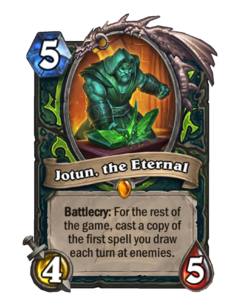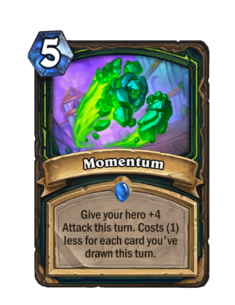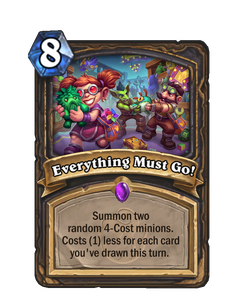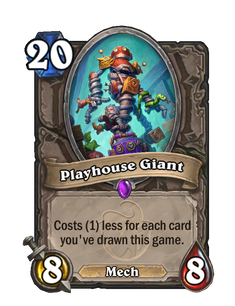Card draw
- For the game conclusion where neither player wins, see Draw
Card draw is a term used to refer the process or mechanic of taking cards from the top of the deck and adding them to the hand.
A card draw effect is an effect which causes the player to draw one or more cards directly from their deck. Cards with card draw effects are sometimes called "cantrips", after similar effects in other games.
Card draw effects are distinguished from generate effects, which place new cards into your hand without removing them from your deck; and from put into hand and put into battlefield effects, which place cards of a specific type into the hand or the battlefield directly from the player's deck, rather than simply drawing the next card in the deck.
Notes[edit | edit source]
The following terms are used in this wiki to carry different meanings related to card drawing:
- Draw-related cards - These cards have special effects which trigger based on the drawing of other cards.
- On-draw effect cards - These cards trigger their effect as soon as they are drawn.
- Casts When Drawn - This ability appears on spell cards. When the spell card is drawn, it is cast without using any mana. Another card is then drawn.
Details[edit | edit source]
Drawing a card places the top card of the player's deck into the player's hand. Since a player's hand can only hold 10 cards at a time (with the exception of the effect of ![]() Valdris Felgorge), attempting to draw cards with a full hand will result in overdraw (see below), which is not considered card draw for game purposes.
Valdris Felgorge), attempting to draw cards with a full hand will result in overdraw (see below), which is not considered card draw for game purposes.
Once the player's deck has been exhausted, attempting to draw a card with an empty deck will cause fatigue damage to the player, with the amount increasing each time a draw is attempted.
All decks have a predefined order on the server.[1] If the deck is reordered, such as with ![]() Sightless Watcher,
Sightless Watcher, ![]() Lorekeeper Polkelt, or shuffle effects, card drawing still draws from the top of the deck.
Lorekeeper Polkelt, or shuffle effects, card drawing still draws from the top of the deck.
Hero death is not checked in-between draws, but only after the draw phase has completed.
- For example, if the player is at 4 health and draws a
 Bomb dealing 5 damage and then a
Bomb dealing 5 damage and then a  Soul Fragment restoring 2 health, the player will not lose during the draw phase but will be alive at 1 health at the end of the draw phase.
Soul Fragment restoring 2 health, the player will not lose during the draw phase but will be alive at 1 health at the end of the draw phase. - For example, if the player is at 1 health and draws 45 fatigue cards, they will not die until the last fatigue card is drawn.
Overdraw[edit | edit source]
- Main article: Mill
Attempting to draw a card when you already have the maximum number in your hand (usually 10) will result in the drawn card being removed from play, something referred to as "overdraw". Overdrawn cards are revealed to both players, before the card is visually destroyed.
Overdrawing is similar to discarding, but does not count as a discard for game purposes. While discard effects remove cards from the hand, overdraw removes the card directly from the deck. Overdraw also does not count as card draw for game purposes, since the game never attempts to draw the card into the hand, but rather destroys it since there is no room.
Overdrawing is also referred to as milling.
Types[edit | edit source]
Most cards are drawn automatically without the use of specific effects: Each turn, the current player draws a random card from their deck. This occurs at the start of each round, before the player is able to take any actions, but after effects that state "at the start of your turn". The initial hand and mulligan at the start of the game also draws 3-4 randomly selected cards, although this takes place before regular game mechanics become active and do not trigger effects related to card drawing.
Certain spells cause the caster to draw one or more cards when they are cast. Some minions also have card draw effects as part of their card text, and vary in activation method. Many have a one-time Battlecry or Deathrattle that activates the card draw, but some that use triggered effects can be used repeatedly to draw numerous cards.
Card draw effects draw from the top of the randomly ordered deck, unlike "put into battlefield" or "put into hand" effects, resulting in an even chance of getting any card remaining in the deck. However, it is possible to gain more control over drawing using ![]() Tracking, which gives the player a choice among the top three random draws.
Tracking, which gives the player a choice among the top three random draws.
Strategy[edit | edit source]
Card advantage is a very important part of card games. Having more cards means having more options, and increases the likelihood of having the card you need. While card value and strategy form a part of this, using cards with card draw can also help you to maintain a good range of options each turn, and even attain a card advantage over your opponent.
An example of the value of card draw effects would be the ![]() Loot Hoarder, who draws the controlling player a card when he is destroyed. If the player uses their Loot Hoarder to attack their opponent's
Loot Hoarder, who draws the controlling player a card when he is destroyed. If the player uses their Loot Hoarder to attack their opponent's ![]() Knife Juggler, both minions will be destroyed. However, because Loot Hoarder's death draws a new card for its owner, the exchange can be considered to be favourable.
Knife Juggler, both minions will be destroyed. However, because Loot Hoarder's death draws a new card for its owner, the exchange can be considered to be favourable.
It is very important in gameplay to make profitable trades, such as using a ![]() Patient Assassin to attack a
Patient Assassin to attack a ![]() Molten Giant, destroying both minions. However, in some situations it will be necessary to sacrifice multiple minions to destroy a single enemy, such as using
Molten Giant, destroying both minions. However, in some situations it will be necessary to sacrifice multiple minions to destroy a single enemy, such as using ![]() Murloc Raider to break
Murloc Raider to break ![]() Sunwalker's Divine Shield, before then attacking with Patient Assassin. Having good card draw can make this more viable, with a larger supply of cards to use.
Sunwalker's Divine Shield, before then attacking with Patient Assassin. Having good card draw can make this more viable, with a larger supply of cards to use.
The benefit of card draw has its limits, however, in the form of fatigue. Once a player has exhausted their deck, fatigue deals increasing damage to them each time they try to draw another card. Using too much card draw in a deck can lead to reaching this point prematurely, inadvertently leading to the player's demise.
Another limit to card draw is the player's hand size. Each player can only have a total of 10 cards in their hand at any time (with the exception of the effect of ![]() Valdris Felgorge). If you attempt to draw a new card when your hand is full, that card will be destroyed. Cards destroyed in this way will be revealed face up to both players before being incinerated. This can therefore potentially grant additional strategic value by informing you of your opponent's deck style, or showing that they have lost a critical and possibly unique card, knowledge which can be very useful in anticipating what your opponent may or may not be capable of.
Valdris Felgorge). If you attempt to draw a new card when your hand is full, that card will be destroyed. Cards destroyed in this way will be revealed face up to both players before being incinerated. This can therefore potentially grant additional strategic value by informing you of your opponent's deck style, or showing that they have lost a critical and possibly unique card, knowledge which can be very useful in anticipating what your opponent may or may not be capable of.
Both of these mechanics can be exploited to the other player's benefit. For example, forcing your opponent to draw cards when their hand is full will cause them to waste valuable cards. Even more powerfully, forcing your opponent to draw cards when they have exhausted their deck will cause them to suffer increasing fatigue damage. In such circumstances cards like ![]() Northshire Cleric can actually become the direct cause of the controlling player's defeat.
Northshire Cleric can actually become the direct cause of the controlling player's defeat.
Forcing card draw and controlling the player's ability to empty their hand are key components in milling, a technique that attempts to hasten the opponent's progress toward fatigue damage, and/or cause them to overdraw, destroying and revealing cards. This is usually achieved through using card draw effects such as ![]() Naturalize and Coldlight Oracle to cause the opponent to draw a significant amount of additional cards. Unlike with Northshire Cleric, milling generally does not rely on the opponent's cards to initiate card draw, but aggressively pursues the goal through its own means.
Naturalize and Coldlight Oracle to cause the opponent to draw a significant amount of additional cards. Unlike with Northshire Cleric, milling generally does not rely on the opponent's cards to initiate card draw, but aggressively pursues the goal through its own means.
Forced overdraw can be an effective way of causing the opponent to reveal cards, which can illustrate their deck type or general strategy. Destroying key cards such as ![]() Grommash Hellscream or a second
Grommash Hellscream or a second ![]() Ice Block can serve to inform the player that their opponent no longer has a chance to draw these cards, providing substantial strategic advantage. However, since card draw is randomised, unless the game reaches fatigue, overdraw will not actually affect which cards the player draws.
Ice Block can serve to inform the player that their opponent no longer has a chance to draw these cards, providing substantial strategic advantage. However, since card draw is randomised, unless the game reaches fatigue, overdraw will not actually affect which cards the player draws.
Some cards interact with the number of cards in the player's hand, and can offer advantages for having either a full or an empty hand. ![]() Mountain Giant and
Mountain Giant and ![]() Twilight Drake are cards which reward having a large hand, and players with these cards will often try to make their hand as full as possible before playing them. Cards with discard effects such as
Twilight Drake are cards which reward having a large hand, and players with these cards will often try to make their hand as full as possible before playing them. Cards with discard effects such as ![]() Soulfire and
Soulfire and ![]() Doomguard offer a powerful incentive to empty the hand before playing them, or at least to play any valuable cards first.
Doomguard offer a powerful incentive to empty the hand before playing them, or at least to play any valuable cards first.
The warlock has a particularly interesting relationship with card draw, due to their hero power ![]() Life Tap as well as the card
Life Tap as well as the card ![]() Valdris Felgorge. Warlocks can use Life Tap to quickly fill their hand, doubling the usual rate of card draw each turn. This can be useful for quickly growing a full hand for use with cards like
Valdris Felgorge. Warlocks can use Life Tap to quickly fill their hand, doubling the usual rate of card draw each turn. This can be useful for quickly growing a full hand for use with cards like ![]() Twilight Drake, or to refill the hand after emptying it with cheap minion cards or discard effects like
Twilight Drake, or to refill the hand after emptying it with cheap minion cards or discard effects like ![]() Doomguard. Warlocks trying to play around discard effects may deliberately empty their hand before then refilling using Life Tap, or even Life Tap before discarding in order to reduce the likelihood of losing specific cards in their hand.
Doomguard. Warlocks trying to play around discard effects may deliberately empty their hand before then refilling using Life Tap, or even Life Tap before discarding in order to reduce the likelihood of losing specific cards in their hand.
Cards[edit | edit source]
- For Wild format listings, see Card draw/Wild format.
Collectible[edit | edit source]
Uncollectible
Related cards
- For Wild format listings, see Card draw/Wild format.
These cards have a specific interaction with the drawing of any card.
Casts When Drawn[edit | edit source]
- Main article: Casts When Drawn
Casts When Drawn are card effects which activate when that card is drawn from the deck. For the list of cards, notes, and other information, see Casts When Drawn.
Trivia[edit | edit source]
- Card draw effects have traditionally "been a little bit dangerous" for the designers, particularly due to the possibility of achieving too much consistency in the cards drawn.[2] This can allow players to count on drawing most cards at some point during each match, making powerful but otherwise hard to achieve set piece combos predictable and reliable. Aside from the overall power of card draw, the developers also try to restrict its availability due to the potential for too much card draw to make every game feel "sort of the same".[2][3] This is because increased card draw allows players to draw more of their deck each game, removing much of the variation normally seen between matches.[2] For these reasons, the designers restrict the number of card draw effects available, especially in Standard format.[3]
References[edit | edit source]
- ↑ Chadd Nervig on Twitter (X). (2020-07-24).
- ↑ 2.0 2.1 2.2 IGN.com - HEARTHSTONE: CREATING THE DISCOVER MECHANIC. (2016-01-17).
- ↑ 3.0 3.1 Ben Brode on the official forums. (2017-02-02).

